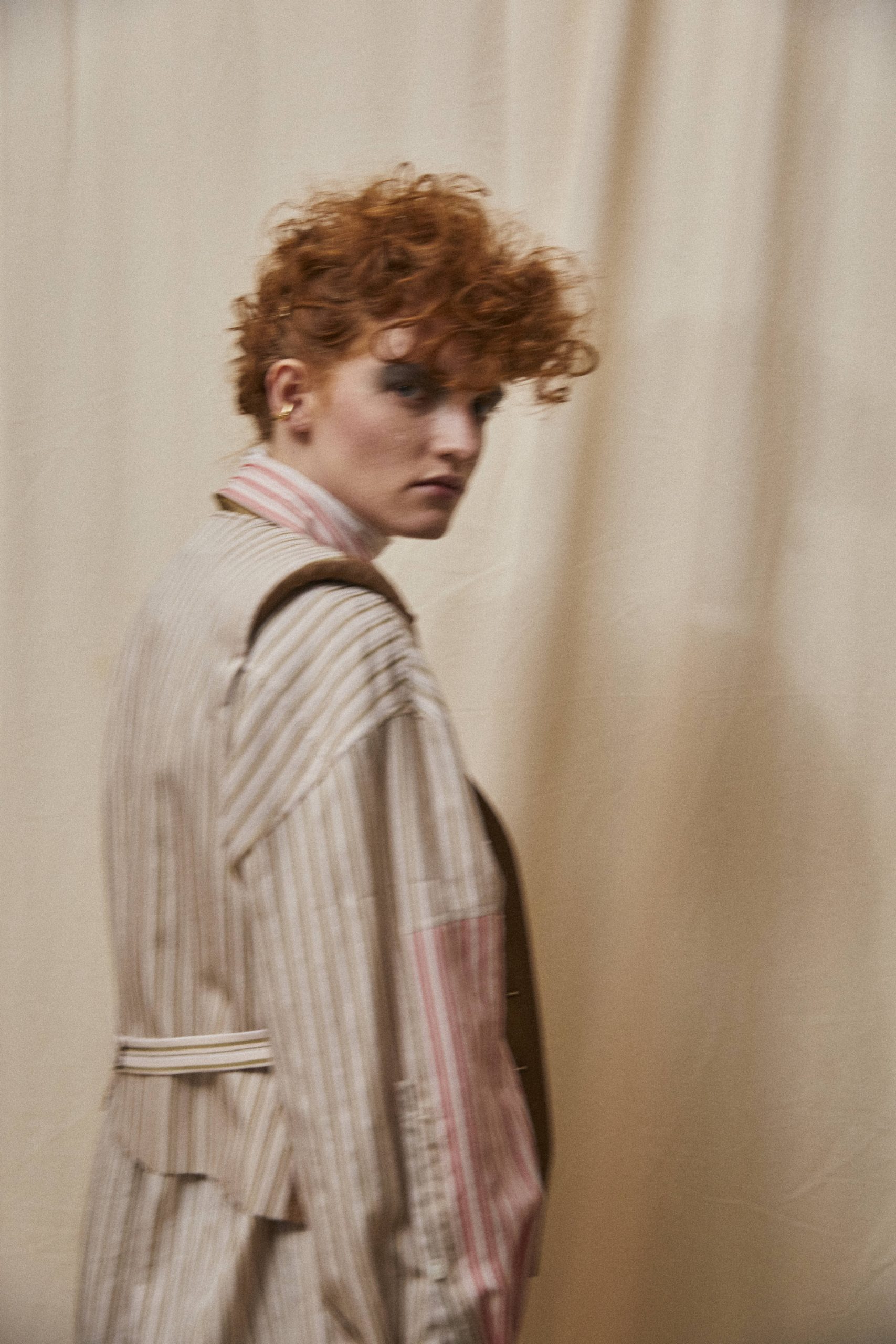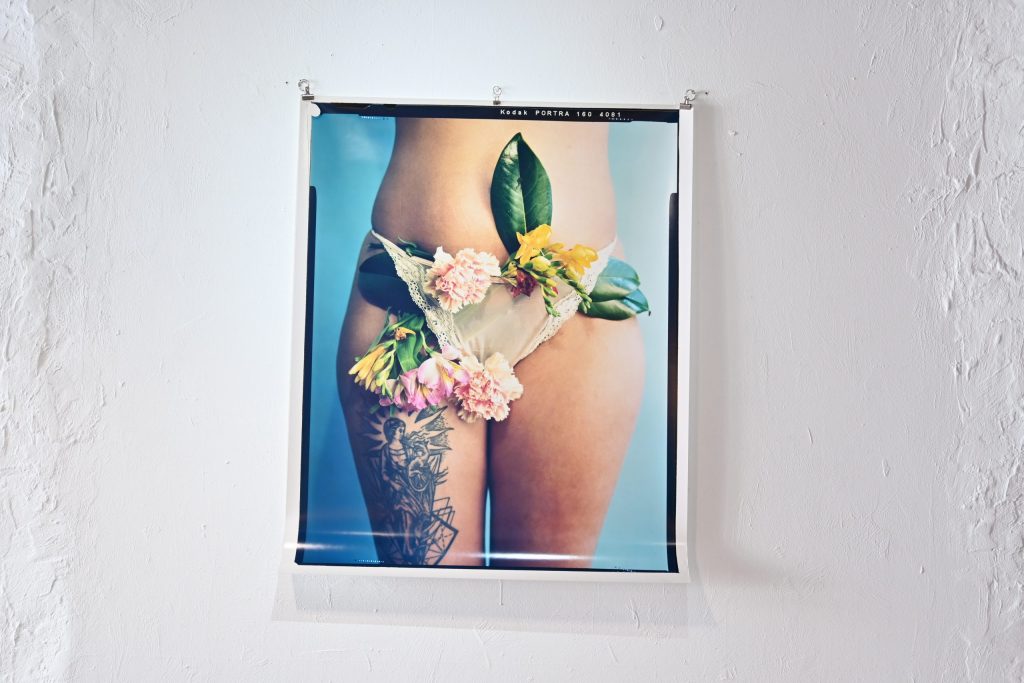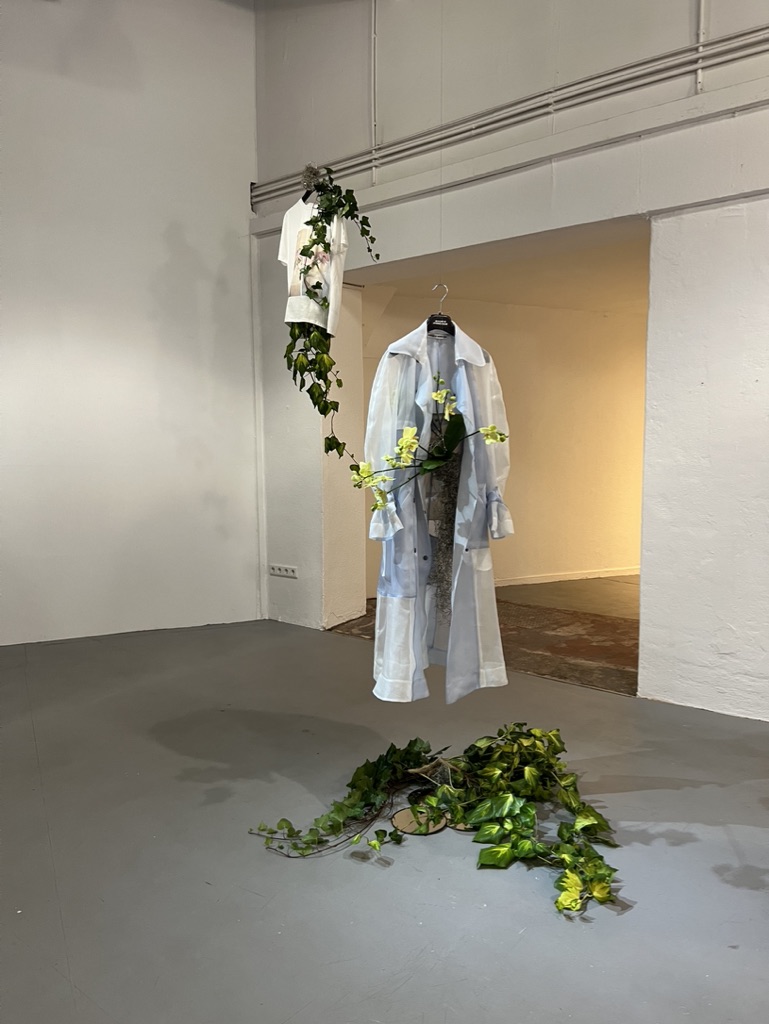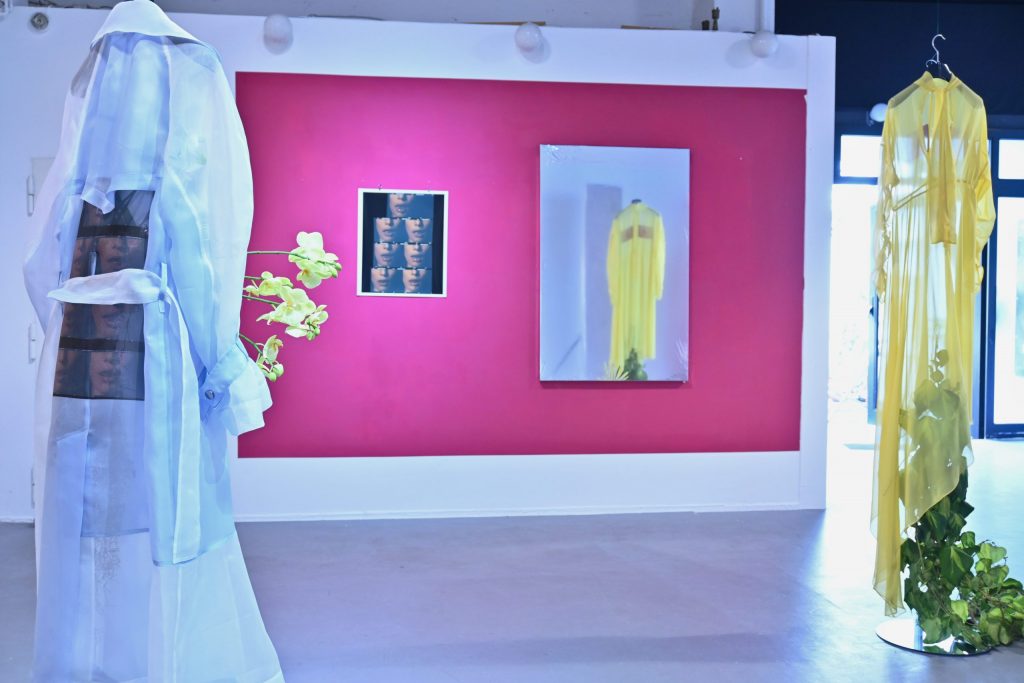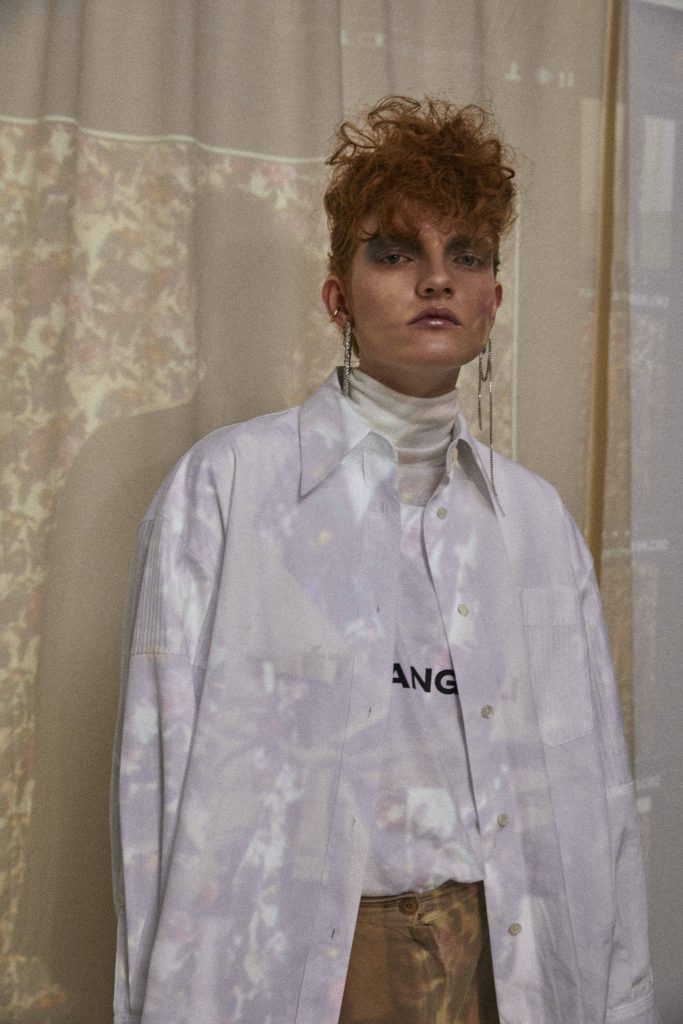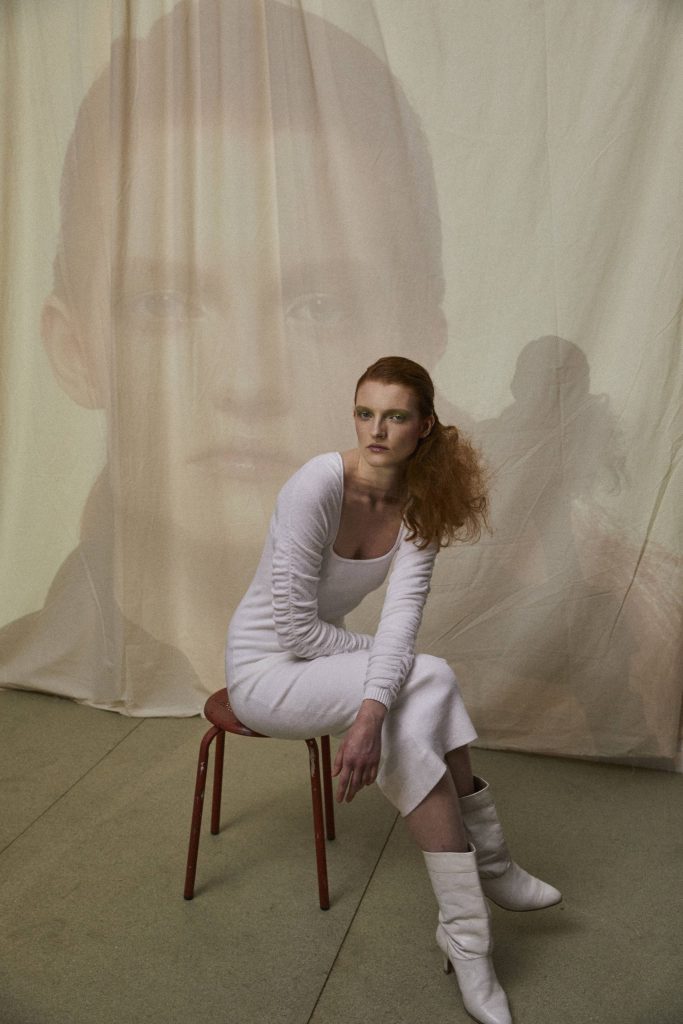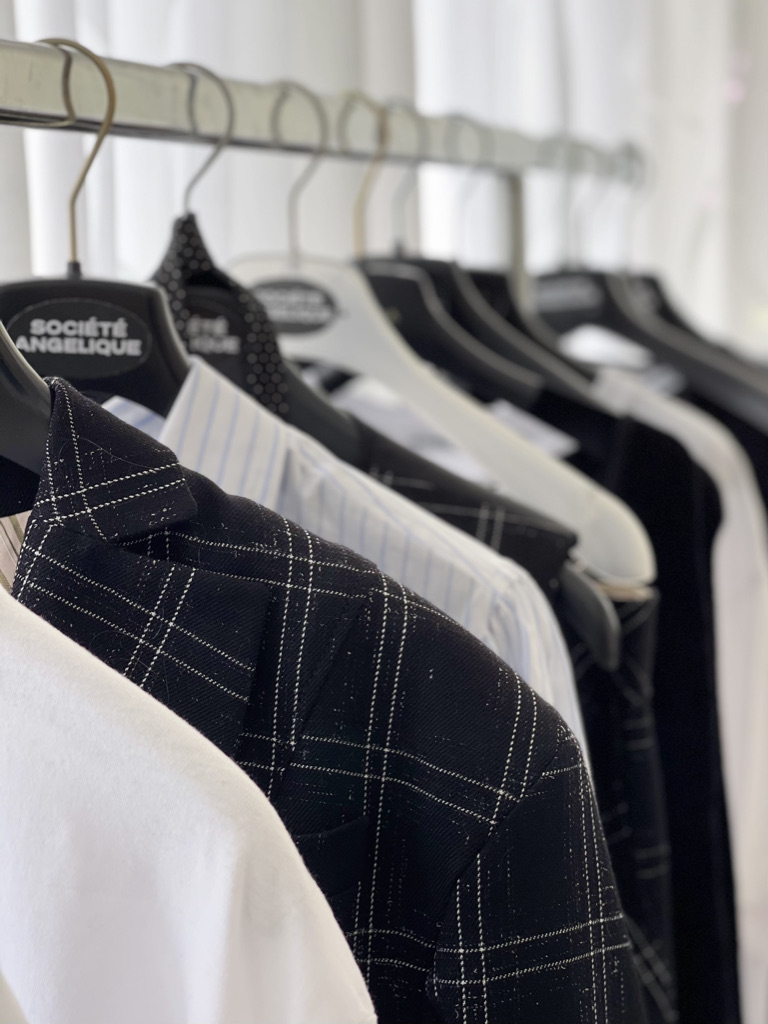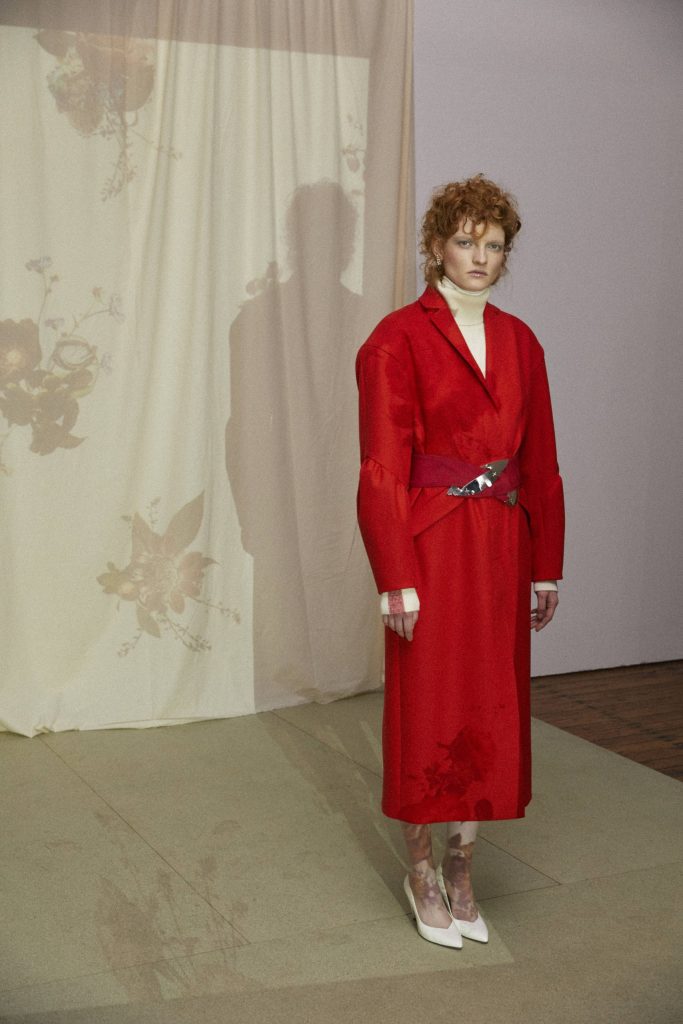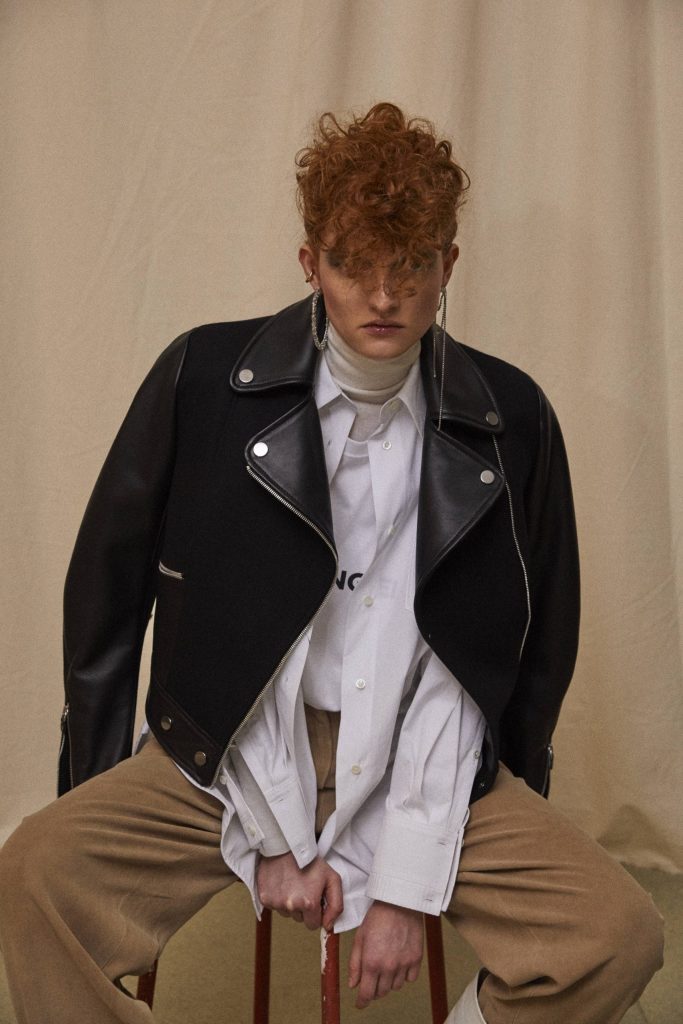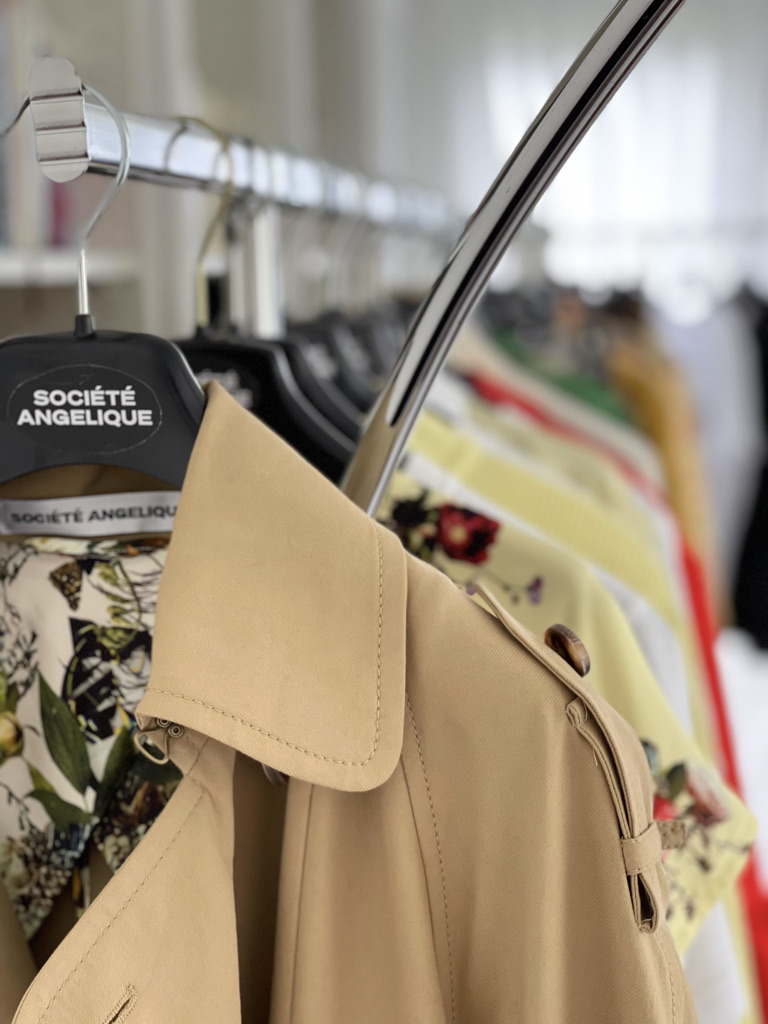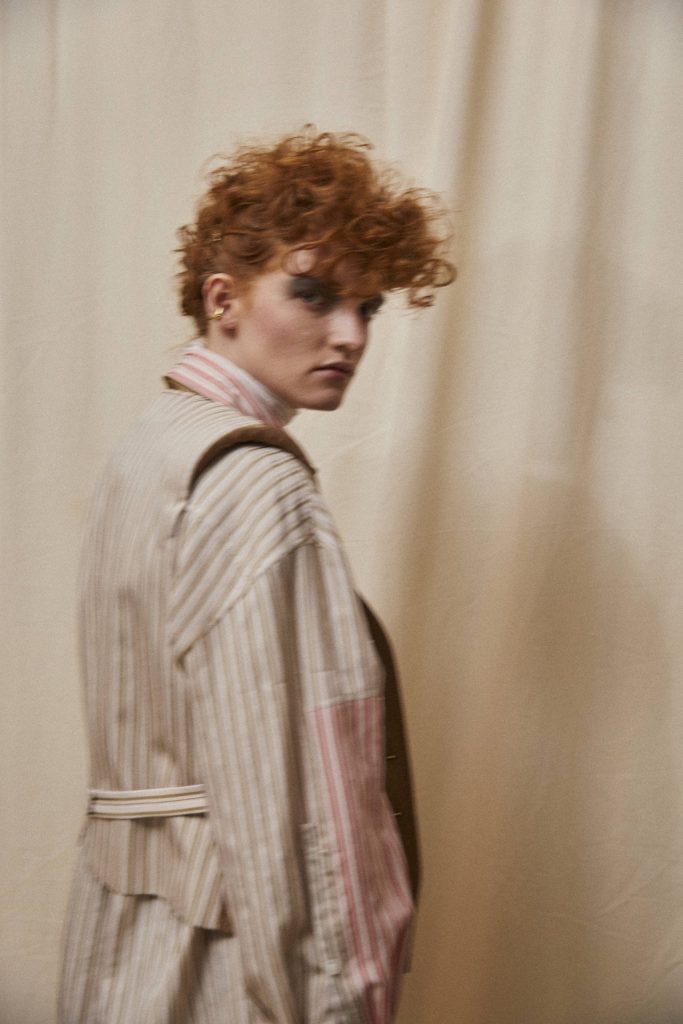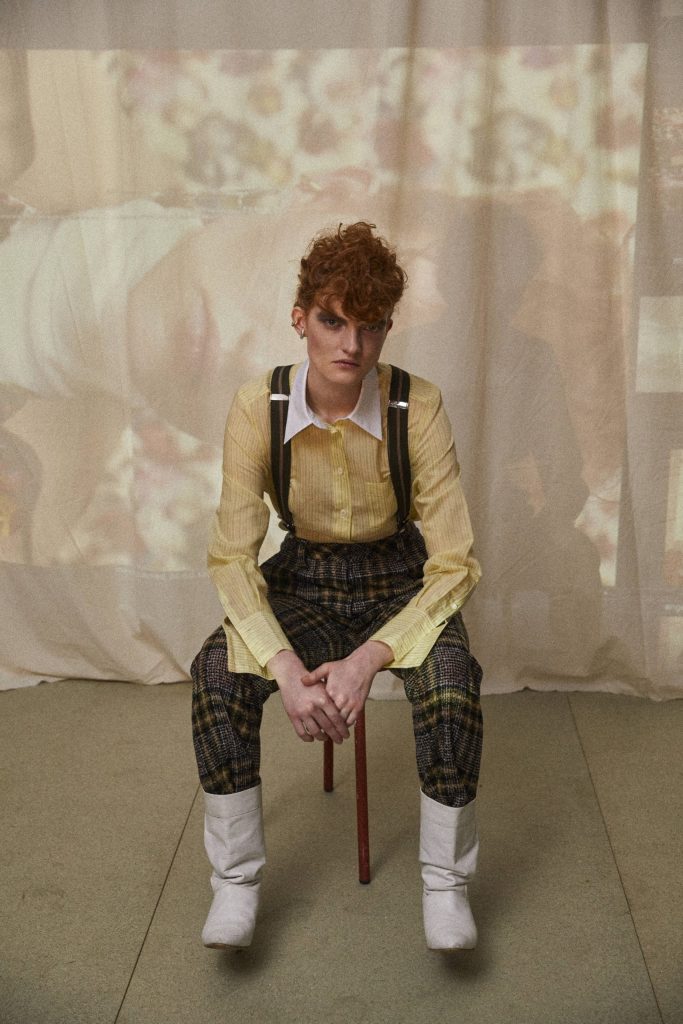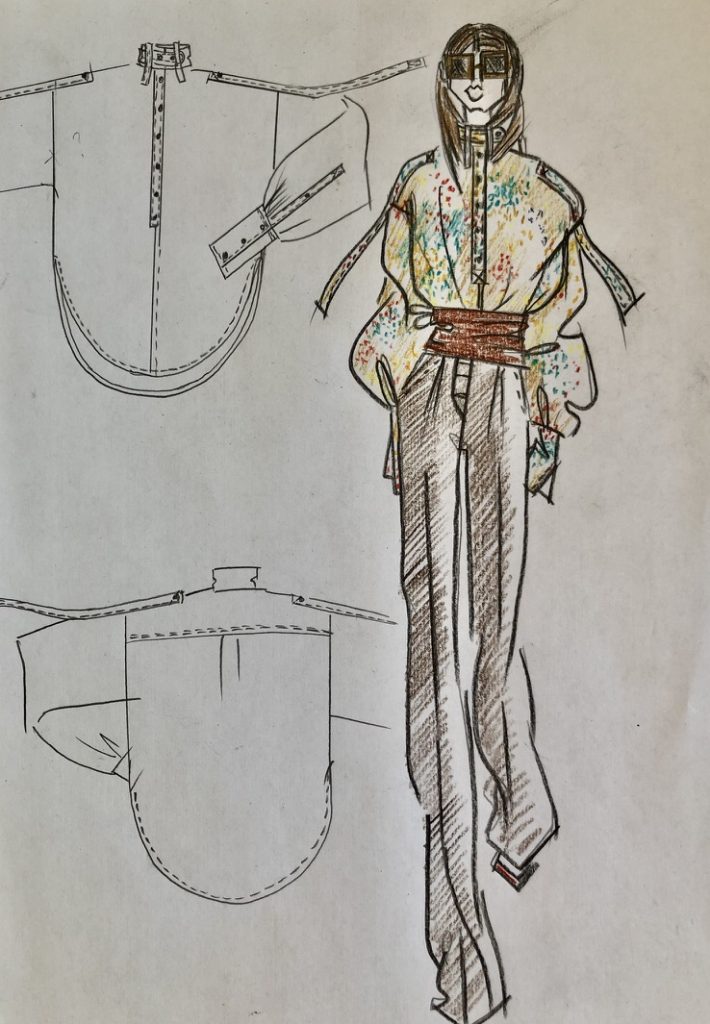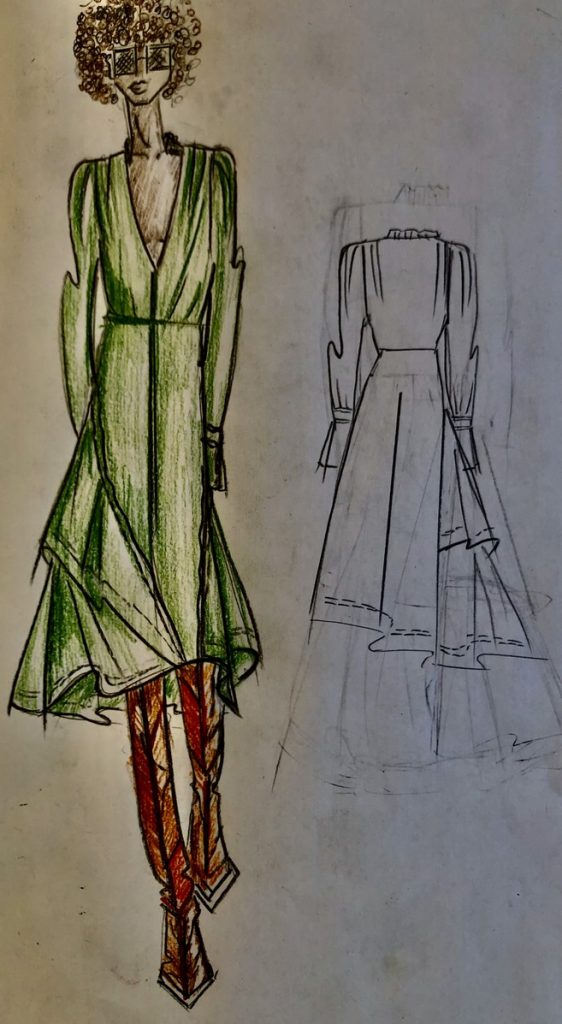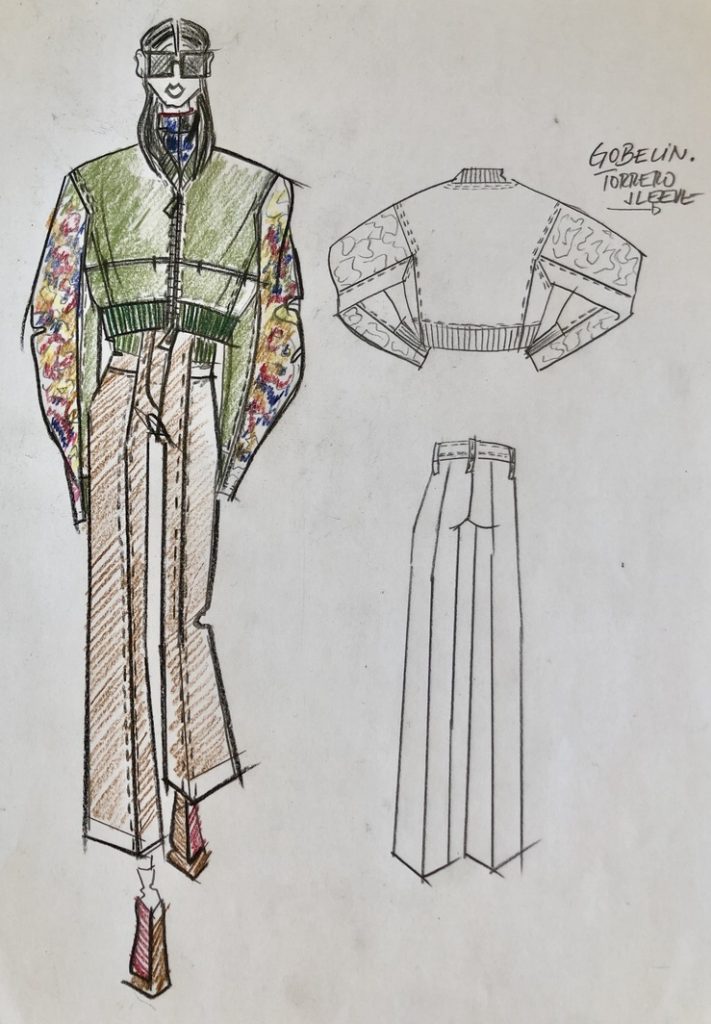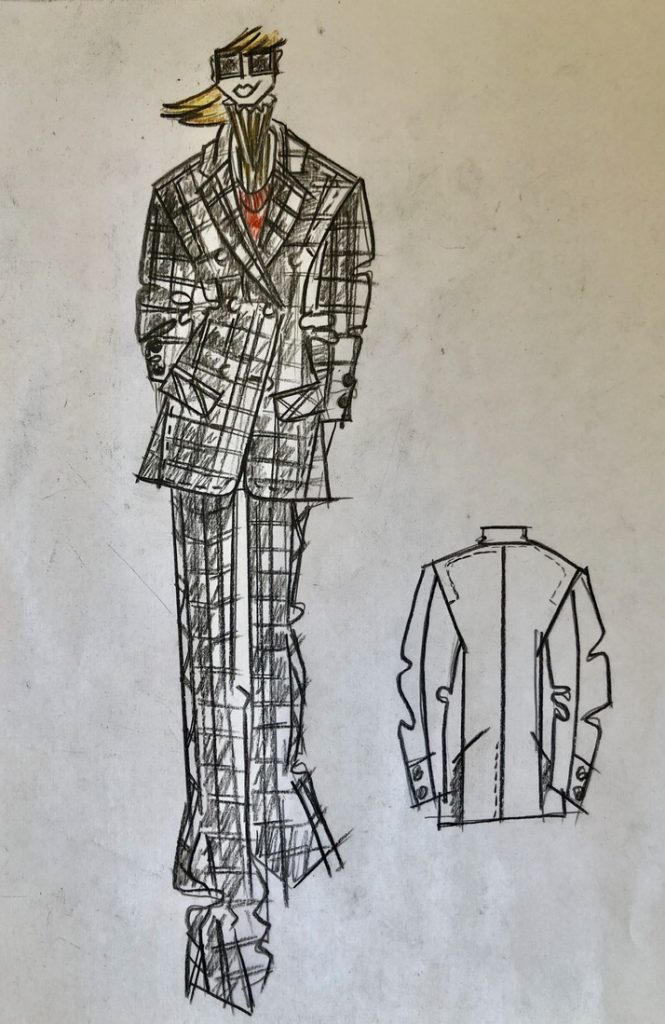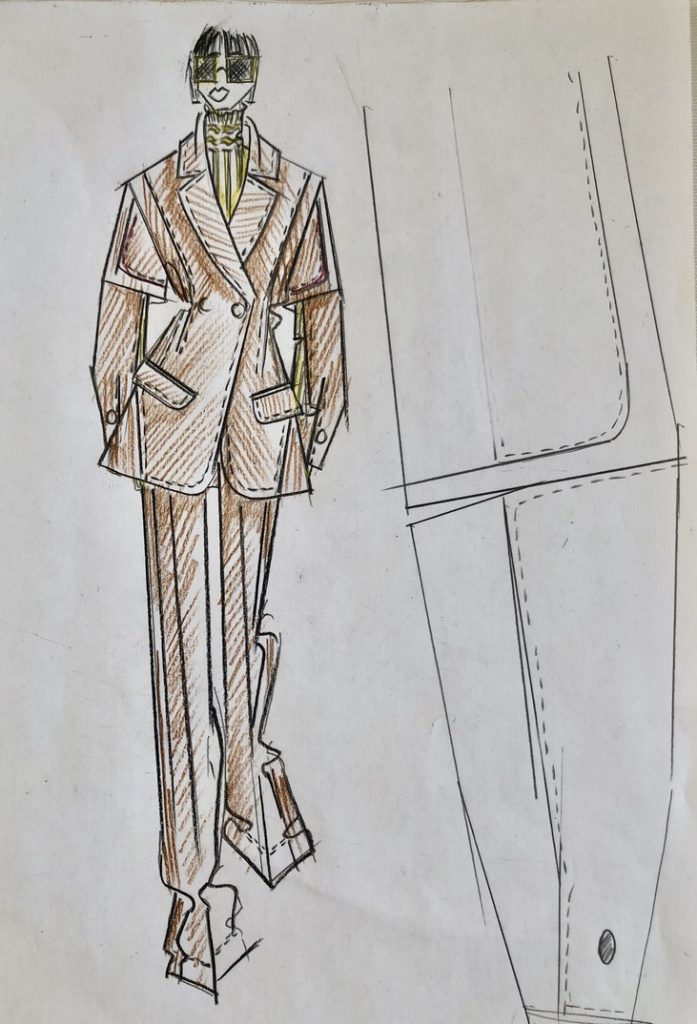Paris, Milan, New York, Mönchengladbach. Fashion designer Angelika Kammann has taken a daring step into self-employment and back to the place of her childhood following her international career.
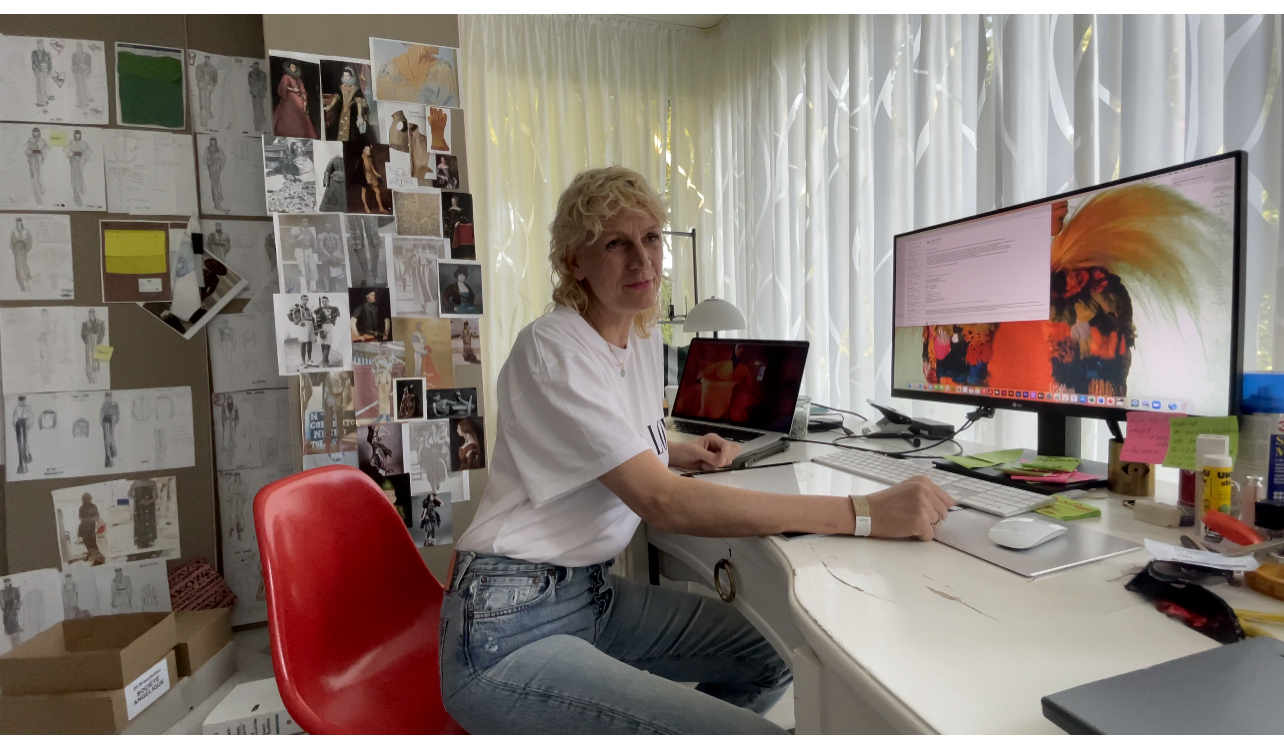
Large single-family homes are standing in a row on Peter-Nonnenmühlen-Allee in Mönchengladbach, surrounded by extensive gardens with manicured lawns, towering trees, and sprawling hydrangeas. There is no name on the metal gate of number 83, though one of the most exciting newcomers to the German fashion scene is living and working in the pointed gabled house behind it: Angelika Kammann, the founder of the Société Angelique label.
Angelika, you just won the award of the Strike a pose Festival 2022 together with the French-Colombian photographer Karen Paulina Biswell. What does this award mean to you?
The award means a lot to me because I worked with wildpalms gallery and Karen Paulina Biswell on a topic that is very important to us, namely the return to our own physicality. Biswell’s series ‘Ellas//Sie’, which for me reflects lightness and the mystery of femininity, touched my heart. I am very pleased that the jury of the Strike a pose Festival found the message special and contemporary, especially now that the ruling against liberal abortion rights is causing bewilderment in America. I am also happy that we can support the mission of wildpalms to give Latin American artists a stage in Germany with the award.
We had the pleasure of getting to know your debut collection at Galerie wildpalms during the Strike-a-pose-Festival in Düsseldorf in summer 2021. That was a world premiere, wasn’t it?
It was! The Galerie Wildpalms truly was a perfect stage for it, too. The Strike-a-pose festival focuses on the interaction of art and fashion. My collection is inspired by Robert Rauschenberg’s stage design for Merce Cunningham’s dance company’s piece “Summerspace”. Apart from this, I am focusing on conscious use of nature and our resources. As a result, the work of Colombian sound artist Beatriz Eugenia Díaz, who translates the growth of plants into sounds, presented in parallel to mine, seemed like a perfect match for my designs.
It surely was a bold move to start your label in the middle of the pandemic. Why now of all times?
It felt like the right time for it. I had worked for Wolfgang Joop’s label Wunderkind before. He encouraged me to unleash my creativity. I decided to take the plunge in 2019, telling myself: When, if not now, is a good time to think of things in a fundamentally different way? My motto has always been “Just do it”.
That attitude has brought you a long way already. You’ve worked in Paris, Milan, and New York. Your resume is breathtaking. Curiosity and a sense of adventure seem to have been your constant companions. How does it feel to return to the Rhineland?
I came back for love, to be with my partner after leading a long-distance relationship for years. Those were my Sturm und Drang days. I wanted to get away, the farther the better. Now I can see my home through different eyes. I grew up very close to my current home at the Bunter Garten. I really enjoy rediscovering the places of my childhood.
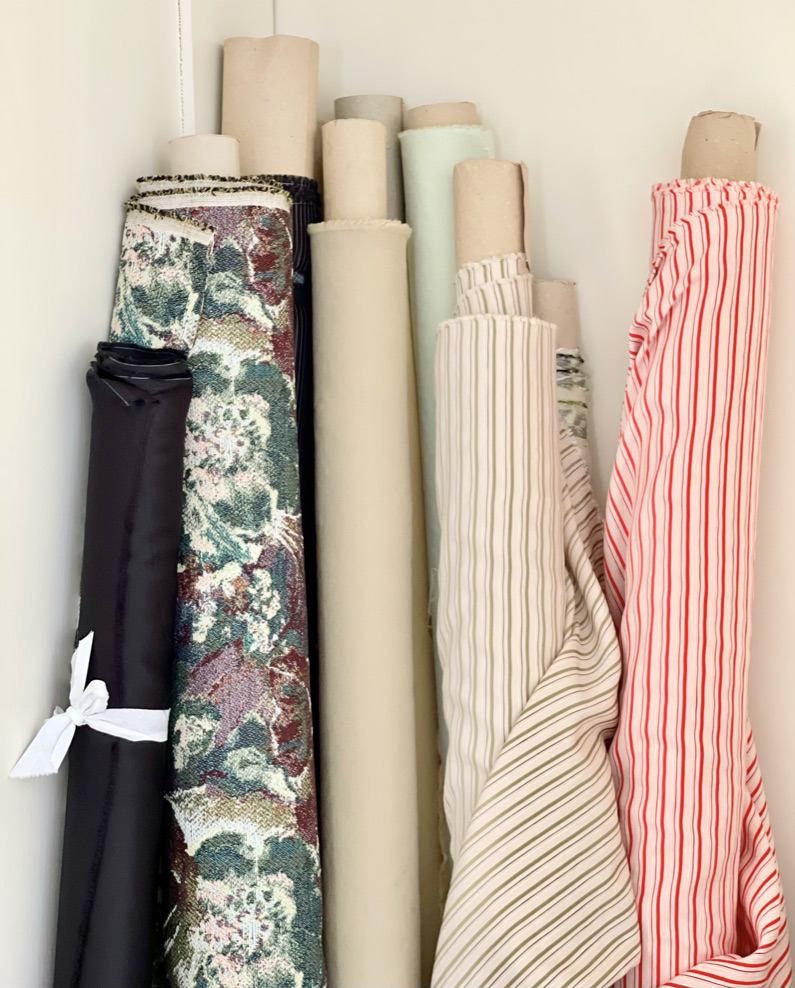
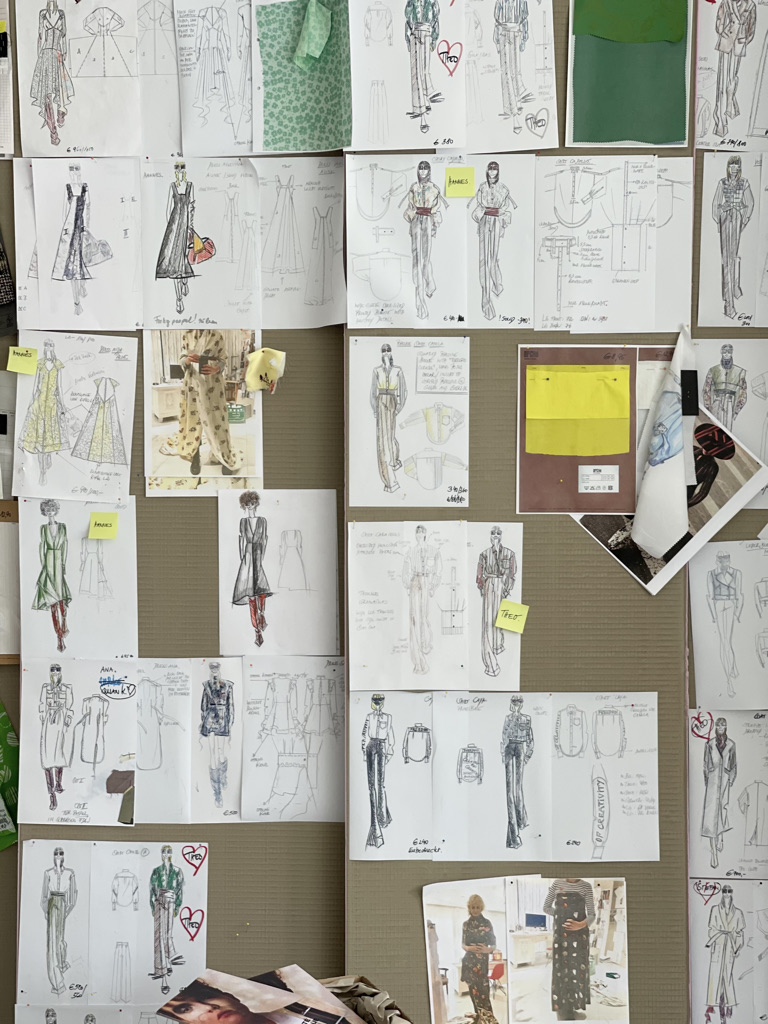
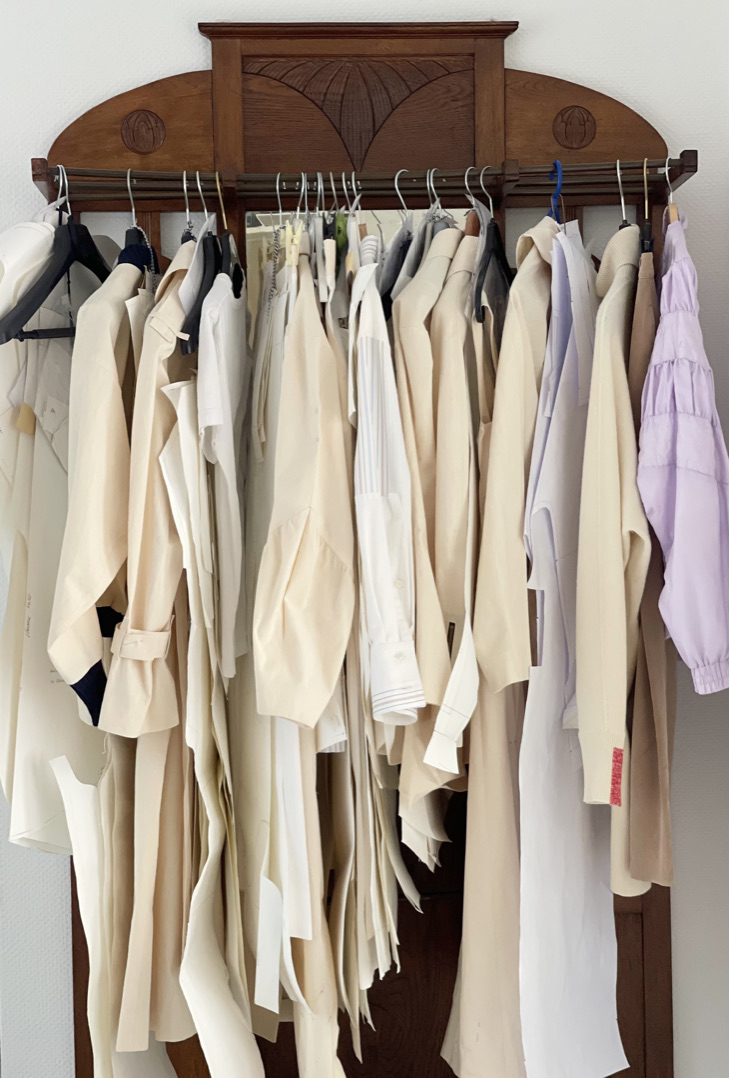
You are drawing on a wealth of experience after working for Strenesse and Escada, among other companies. Both of them are great names in the German fashion world. What is the most important aspect for you in your own collection?
Apart from the look, it’s sustainability. All of our fabrics are biodegradable. We use cotton, wool, and silk, as well as FSC-certified viscose and acetate. Both of those are made of natural cellulose. FSC is short for Forest Stewardship Council. It certifies sustainable forest and plantation management. Our leather is sourced from production surpluses in Duisburg. Our production is located in Germany and Poland. In order for our clients to be able to trace the production, we attach a QR code to each garment to provide information on our philosophy, the materials and production sites. By the way, sustainability does not stop with the hangers and packaging. We want to avoid plastic sleeves and are currently looking into corn-based ones. As you can see, there are many ways in which things can still be improved.
You called your first line “Summerspace, Toreros in Utopia”. Why?
I feel that we’re all toreros. Women in particular still have to fight to make their way in many areas. Equal treatment in the workplace is just one example. This is why my jacket shapes and sleeve cuts are reminiscent of the traditional bullfighting garments.
Your line has an ultra-modern look and celebrates the feminine silhouette with styling cues from classic women’s and men’s clothing. Your range covers anything from femme fatale dresses to oversized double-breasted jackets. You do not believe that sustainable fashion needs to follow a specific look or have an “eco” touch. What is your inspiration?
Artists, movies, historical events, as well as nature. My first collection was inspired by Merce Cunningham and Robert Rauschenberg. The film “In the Mood for Love” by Wong Kar-Wai inspired me to create the floral patterns.
Your collection seems very cohesive, as if made in a single cast, in spite of this wide-spread influence. That’s probably one reason why it was so enthusiastically received.
I was immensely lucky. Christiane Arp, formerly the editor-in-chief of the German Vogue, noticed me and invited me to the Berlin salon, a very exclusive event where selected German labels present their collections. That was an accolade in and of itself. I was also able to gain the KaDeWe in Berlin as one of my customers with the first collection.
You’re already working on the second one.
I am! It will be called “Reflections of Utopia”. I think that following the first collection, but also the months of the pandemic, the time has come to reflect on what has happened. I am inspired by the character of “Trinity” from the movie “Matrix”, but also by Bauhaus, Le Corbusier, and the artist Anish Kapoor. I focus on a futuristic look with references to the 1980s – and, of course, I will use some mirror surfaces.
Implementing such a look with sustainable materials can’t be easy.
True. It’s a bit like squaring the circle. But I just want to show that sustainable fashion can do that, too. Researching material is always a vital and exciting part of my work. For example, I just came across a great recycled denim here in Mönchengladbach. I definitely plan to use that. By the way, we also work with 100 percent zero waste. That’s something that really bothered me when I was working in the industry: many times, there were entire bales of fabric left over, either because the colour was changed or because the piece was not produced at all in the end. I think we are just at the beginning of a movement that will change fashion. I can see a change for the better. I want to be a part of that. It’s actually different from Matrix. My vision of the future is not apocalyptic, but utopian and thus positive and hopeful.
Société Angelique
Peter-Nonnenmühlen-Allee 83
41063 Mönchengladbach


